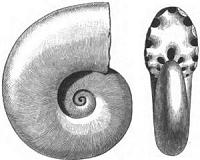| . |  |
. |
Chicago IL (SPX) Jan 17, 2011 A team of paleontologists and geologists from Argentina and the United States have announced the discovery of a lanky dinosaur that roamed South America in search of prey as the age of dinosaurs began, approximately 230 million years ago. Sporting a long neck and tail and weighing only 10 to 15 pounds, the new dinosaur has been named Eodromaeus, the "dawn runner." "It really is the earliest look we have at the long line of meat eaters that would ultimately culminate in Tyrannosaurus rex near the end of the dinosaur era," said Paul Sereno, University of Chicago paleontologist and National Geographic Explorer-in-Residence. "Who could foretell what evolution had in store for the descendants of this pint-sized, fleet-footed predator?" Sereno and his colleagues describe a near-complete skeleton of the new species, based on the rare discovery of two individuals found side-by-side, in the journal Science. The paper presents a new snapshot of the dawn of the dinosaur era-a key period that has garnered less attention than the dinosaurs' demise. "It's more complex than some had supposed," Sereno said. Set in picturesque foothills of the Andes, the site of discovery is known as the "Valley of the Moon," said the report's lead author, Ricardo Martinez of Argentina's National University of San Juan. For dinosaur paleontologists, it is like no other. "Two generations of field work have generated the single best view we have of the birth of the dinosaurs," Martinez said. "With a hike across the valley, you literally walk over the graveyard of the earliest dinosaurs to a time when they ultimately dominate." The area was once a rift valley in the southwest corner of the supercontinent Pangaea. Sediments covered skeletons over a period of five million years, eventually accumulating a thickness of more than 2,000 feet (700 meters). Volcanoes associated with the nascent Andes Mountains occasionally spewed volcanic ash into the valley, allowing the team to use radioactive elements in the ash layers to determine the age of the sediments. "Radioisotopes-our clocks in the rocks-not only placed the new species in time, about 230 million years ago, but also gave us perspective on the development of this key valley," said Paul Renne, director of the Berkeley Geochronology Center in California. "About five million years of time are represented in these layers, from one end to the other." In the oldest rocks Eodromaeus lived alongside Eoraptor, a similar-sized, plant-eating dinosaur that Sereno and colleagues discovered in the valley in 1991. Eoraptor's descendants would eventually include the giant, long-necked sauropods. Eodromaeus, with stabbing canine teeth and sharp-clawed grasping hands, is the pint-sized precursor to later meat-eaters called theropods, and eventually to birds. "We're looking at a snapshot of early dinosaur life. Their storied evolutionary careers are just unfolding, but at this point they're actually quite similar," Sereno said.
Eodromaeus at the root of the dinosaur family tree Their competitors dropped out sequentially over several million years, not at a single horizon in the valley. In the red cliffs on the far side of the valley, larger plant- and meat-eating dinosaurs had evolved many times the size of Eoraptor and Eodromaeus, but it would be even later when they dominated all land habitats in the succeeding Jurassic and Cretaceous periods. "The story from this valley suggests that there was no single advantage or lucky break for dinosaurs but rather a long period of evolutionary experimentation in the shadow of other groups," Sereno said. Other researchers on the paper tracked climate change and other conditions across the layers of the valley. "The dawn of the age of dinosaurs," Martinez remarked, "is coming into focus."
Share This Article With Planet Earth
Related Links University of Chicago Darwin Today At TerraDaily.com
 Species Loss Tied To Ecosystem Collapse And Recovery
Species Loss Tied To Ecosystem Collapse And RecoveryProvidence RI (SPX) Jan 17, 2011 The world's oceans are under siege. Conservation biologists regularly note the precipitous decline of key species, such as cod, bluefin tuna, swordfish and sharks. Lose enough of these top-line predators (among other species), and the fear is that the oceanic web of life may collapse. In a new paper in Geology, researchers at Brown University and the University of Washington used a group o ... read more |
|
| The content herein, unless otherwise known to be public domain, are Copyright 1995-2010 - SpaceDaily. AFP and UPI Wire Stories are copyright Agence France-Presse and United Press International. ESA Portal Reports are copyright European Space Agency. All NASA sourced material is public domain. Additional copyrights may apply in whole or part to other bona fide parties. Advertising does not imply endorsement,agreement or approval of any opinions, statements or information provided by SpaceDaily on any Web page published or hosted by SpaceDaily. Privacy Statement |